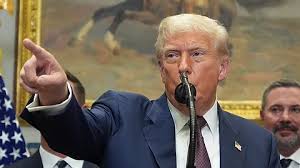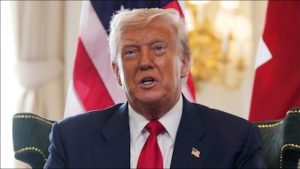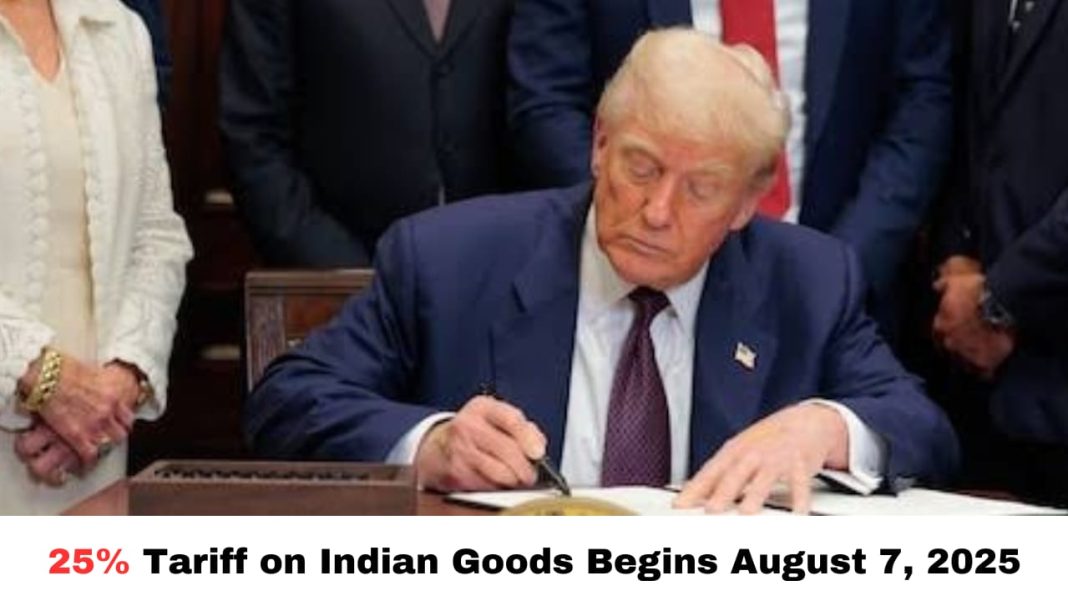Digital News Guru Business Desk:
25% US Tariff on Indian Exports Begins August 7: What Just Happened?
An executive order signed by U.S. President Trump on July 31 mandates a 25% “reciprocal tariff” on all Indian-origin imports—effective August 7. The levy is layered over existing Most-Favoured-Nation (MFN) duties, making it one of the harshest penalties in Washington’s revamped global tariff scheme.
Originally scheduled for August 1, officials pushed the deadline back a week to allow time for U.S. customs systems to update and coordinate logistics with trade partners.

With no product-level exemptions, India faces uniform treatment—even in sectors like pharmaceuticals, electronics, and rare minerals, which major exporters would typically avoid targeting.
What’s Driving This?
While the decision is framed as a response to India’s high U.S. tariffs and trade barriers, critics argue it’s motivated by strategic friction—especially India’s continued energy and arms engagements with Russia, and its active role in BRICS alliances.
U.S. Trade Representative Jamieson Greer has made it clear the rates are “pretty much set”—unlike previous tariff rollbacks during talks with other partners such as the EU or China.
Despite public statements of ongoing negotiations, Washington signaled the 25% rate won’t budge, signalling a more inflexible posture in bilateral trade talks.
What Are the Economic Fallout Zones?
Severity of the Hit
India shipped $86.5 billion in goods to the U.S. in FY 2025. Analysts at GTRI estimate a 6.4% to 30% decline in exports by late 2025—depending on sector exposure and retaliatory dynamics.
Sector Pain Points
Expect deep margin squeezes in textiles,gems & jewellery, auto components, engineering goods, and consumer electronics—where Indian exporters are priced out by higher U.S. duties.
Rupee Pressure and Capital Flight
The rupee slumped to 87.50 per USD by early August, its weakest level since February, and is expected to test 88.5 if volatility continues.
Foreign institutional investors (FIIs) exited Indian equities to the tune of 27,000 crore in the span of nine days.
Shockwaves on Global Indexes
Alongside trade uncertainty, a weak U.S. jobs report amplified fears of a global slowdown, weighing on global equities and triggering risk-off trade preferences in capital markets.

India’s Strategic Response
Official posture: Commerce Minister Piyush Goyal, in Parliament, called Trump’s remarks citing India as a “dead economy” “misplaced and uninformed.” He affirmed that India will protect its national interest, especially in sensitive sectors—and continue bilateral talks only on its terms.
Tuesday’s cabinet meeting confirmed that no agricultural, dairy, or auto-sector concessions are on the table in the short term. Instead, India plans to lean more on sector-level support and branding initiatives for export resilience.
According to Commerce Ministry sources, consultations with exporters and industry bodies are underway to draft employment-linked schemes focused on vulnerable sectors such as marine products and auto supplies.
On the WTO front, India has formally proposed retaliatory duties — targeting approximately $2.89 billion in U.S. exports, mainly in automobiles and components, designed to mirror or exceed expected U.S. collections.
Trade diplomacy: With a U.S. delegation scheduled for New Delhi in mid-August, officials are circumspect—leaning toward a phased agreement post-August 7, but only if reciprocal access and IP frameworks hedge India’s strategic and economic interests.
Global Trade and the New Norm
Washington’s “liberation day tariff” recalibration is sweeping: countries face differential tar‑iff bands of 10% to 41%. While some nations like EU, UK, Vietnam, and China negotiated scaled-back duties, India is among the few granted no exemptions—ranked with higher-risk economies such as Tunisia and Moldova.
Expect rising friction: U.S. lawmakers argue these tariffs incentivise domestic manufacturing and correct trade imbalances. Critics, however, warn the tariffs may fuel inflation (especially in electronics and pharma) and drive U.S. firms toward costlier supply alternatives.
India may find strengthened interest from European and ASEAN partners as manufacturers pivot—echoing Ludhiana industrialists who say India has risen above its “Fragile Five” image to global relevance.
Key Takeaways
The U.S. has escalated trade friction by imposing a 25% duty on all Indian goods, set for August 7, 2025, with no carve-outs.
The decision is partly strategic—India’s ties with Russia and BRICS are cited—rather than purely commercial.

India’s export revenue, market sentiment, and currency stability are under sharp pressure, backed by GTRI estimates and rupee depreciation.
Government response includes WTO retaliation, domestic export support packages, and reframing trade diplomacy—focused on balancing national interest.
The scenario marks a broader global signal: trade relations may now hinge more overtly on geopolitical alignment and regulatory reciprocity than on mutual market access alone.
You May Also Read: JD(S) Leader Prajwal Revanna Found Guilty in Rape Case Involving Domestic Worker








